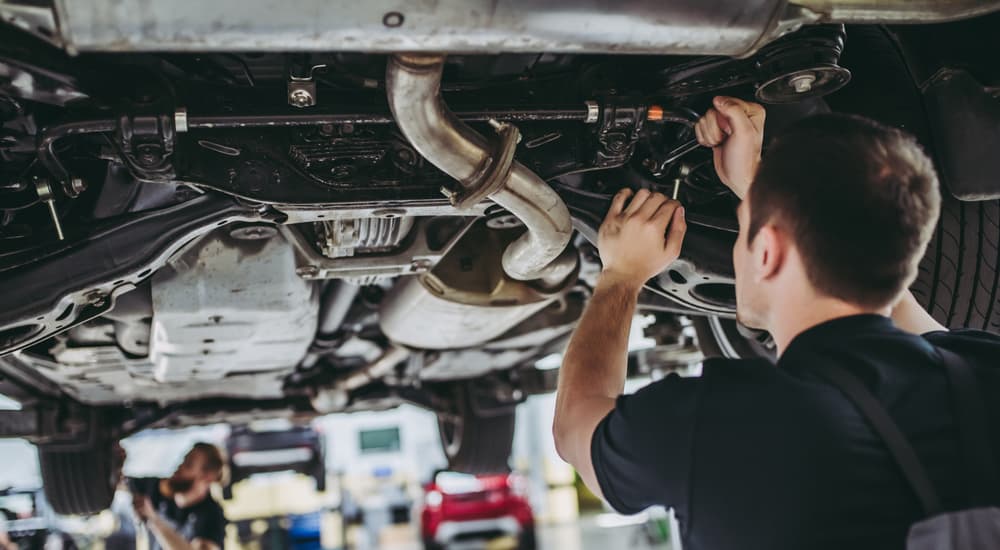When you’re shopping for a used car, you have a lot of decisions to make, not the least of which is whether you should choose a Certified Pre-Owned (CPO) vehicle. Today, many manufacturers are really taking CPO options to new heights, and several of them now offer multiple options for CPO buyers. Honda, for instance, now offers two tiers of CPO vehicles and allows you to view all available CPO models nationwide from a central Honda website. If you’re shopping at a Certified Pre-Owned Honda dealer or any other dealer, then it’s always worth your while to at least consider a CPO Honda and everything it has to offer.
Today, we’re going to take a look at a couple of different CPO programs to get a good sense of how, exactly, they work. We’ll also consider some of the most common reasons a used model might not be certified and offered as a CPO vehicle. In the end, you’ll have a great idea of exactly why a CPO model can be the right choice for you, and this will help when you’re shopping for your next used vehicle.
What is a CPO Vehicle?
Before we go any further, it’s worth taking a moment to make sure we’re all on the same page about what a CPO model is, exactly. For starters, let’s take a look at the other two terms you’ll typically see when you’re looking at vehicles that are not brand-new. A “used” car is just that: it’s had a previous owner or been driven for several years on a lease before being returned to a dealership. You’ll also see the term “pre-owned,” and when it’s by itself, without the word “certified,” then it’s the same thing as a used vehicle. “Pre-owned” just sounds a little nicer, so dealerships often use that word instead of “used,” but they’re the same thing.
Where things become different is when you see the term “Certified Pre-Owned” or “CPO,” as this is not at all the same thing as a used or pre-owned model. A CPO vehicle has been owned or driven on a lease, like any other used car, but it has passed the high standards of the original manufacturer to be “certified” and offered with additional benefits. The standards for certification can vary somewhat from one manufacturer to another, at least in specifics, but it pretty much always involves limits on mileage and vehicle age, as well as passing a pretty comprehensive vehicle inspection.

Why Choose CPO?
Choosing a CPO model instead of a standard used vehicle has one drawback and numerous advantages. The only thing really against going with a CPO Honda or other vehicle is that it will typically cost more than other used models. If you look at the same make and model, with similar features, but one is “used,” and the other is “CPO,” then the CPO model is going to be priced higher. The reason for that, however, is because you get a tremendous amount of peace of mind with a CPO vehicle. They have impressive warranties from the original manufacturer and typically come with a number of other benefits and programs from the maker and dealership.
This is also a good time to point out that you’ll only find CPO models at new car dealerships that are affiliated with the brand in question. That means that if you are hunting for a CPO Honda, you will have to visit a Honda dealer, and if you are searching for a CPO Chevy, a Chevy dealership is your only option. While you might occasionally see an unaffiliated used car dealership advertising a “CPO” vehicle, a look at the fine print will reveal that these are actually “certified” by the dealer itself rather than the manufacturer. Needless to say, these do not come with any of the benefits of a real CPO model.
Does the Brand Matter?
It might seem like any brand is as good as another; that a CPO Honda is the same as a CPO Chevy and the same as a CPO Ford. In reality, however, there are some differences – though they can often be pretty subtle – when looking at one brand or manufacturer and another. So it’s important to consider the advantages and programs offered by a particular brand you’re interested in before buying your car.
For example, let’s take a look at what the Honda and GM CPO programs have to offer:
Honda TrueCertified
- 7 year/100,000 mile Powertrain Warranty
- Up to 4 year/48,000 mile Vehicle Warranty
- Roadside Assistance
- 182-point Inspection
- Fewer than 80,000 Miles
- Within the last 5 Model Years
GM Certified
- 6 year/100,000 mile Powertrain Warranty
- 12 month/12,000 mile Vehicle Warranty
- Roadside Assistance
- 172-point Inspection
- Fewer than 75,000 Miles
- Within the last 6 Model Years
As you can see, the broad strokes are pretty much the same: powertrain warranty, comprehensive vehicle warranty, mileage and age requirements, vehicle inspection, etc. But as you look at the details, there are some key differences between them, and some of these differences can really add up. For one thing, you get an extra year on the powertrain warranty from Honda – though they both have the same mileage limit; so if you think it will take you seven years to put those miles on your vehicle, then that can be an advantage.
Similarly, the Honda CPO program has a more thorough inspection process with 10 points more than the GM inspection. It’s also worth noting that Honda’s vehicle warranty works differently than GM’s, which is set at a 12 month/12,000 mile limit. Honda CPO models that are under their original new vehicle limited warranty have that warranty extended to 4 years/48,000 miles, while those no longer under the original warranty receive a 12 month/12,000 mile warranty. At the very least, it matches GM, and it can surpass it depending on the age of the vehicle.
The point is that the brand you choose really does make a difference when you’re shopping for CPO vehicles, though they all have similar benefits. These benefits can provide you with great peace of mind, something you don’t typically get with a used car. This is why a lot of people are fine with paying a little more to have manufacturer warranty protection that they can count on.

Why Would a Used Car Not be Certified?
Having read all of this, it might seem like you should only ever look at CPO models because anything else must be a disaster waiting to happen. Fortunately, that’s not the case – though CPO vehicles still represent one of the best overall options when shopping used. Still, there are some good reasons a vehicle might not be certified, such as:
- Age – As you saw, all CPO vehicles have to be within a certain number of model years. If you’re looking at a Honda from seven or eight years ago, then it’s simply too old to be offered as a CPO.
- Mileage – Similarly, all CPO Hondas must have fewer than 80,000 miles on them. So a vehicle that has been driven more extensively cannot be certified regardless of condition.
- Expense – It costs the dealer time and money to certify a used model, and they might decide that it’s not worth it even if the vehicle would meet the CPO program requirements. Just because a newer and low mileage used vehicle isn’t CPO doesn’t mean there is a problem with it; the dealer just might think it wasn’t worth the hassle.
It’s not always easy to tell exactly why a used vehicle might not have been inspected and certified to be offered as a CPO model. At the end of the day, the best thing you can do is make sure you choose a dealership that you can trust so you feel confident when shopping with them. Then, check out their selection of vehicles and see what they have to offer in terms of CPO models to ensure you get the best car or SUV at a price that works for you. A CPO model might cost a little more than other used vehicles at a dealership, but the protection and confidence they deliver are typically well worth the added investment.



